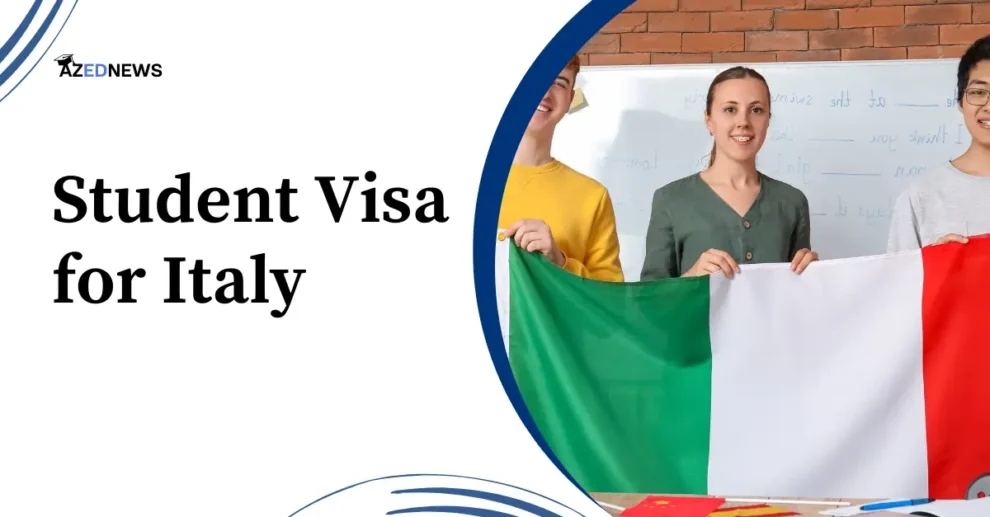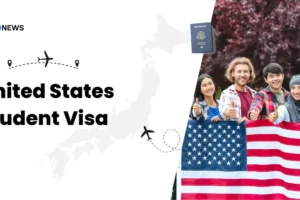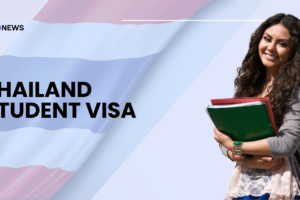If you plan to study at one of Italy’s prestigious institutions, you must obtain a Student Visa for Italy. Italian institutions are some of the most prestigious in the world. In addition to receiving top-notch instruction, you will experience the country’s renowned food, stunning architecture, and many eye-catching sights.
Table of Contents
Foreign people may need to apply for an Italy student visa if they intend to study there for more than three months.
Depending on your country of citizenship, you may require a visa. You will also require an Italian residency permit in addition to the visa. One kind of long-stay Italian visa is the student visa. If you intend to stay in Italy for more than 90 days, you must apply for this type of visa.
Key Takeaways:
- Students from EU countries do not need a student visa for Italy.
- There are two intakes for international students in Italy every year.
- There are two types of visas for non-EU students which are visa type C and visa type D.
- The documents that are to be submitted by students for Italy student visas include passports, photographs, proof of accommodation, etc.
- The processing fee for a student visa for Italy is about 50 Euros.
- 8 days after arriving in Italy, students can apply for a residence permit.
- Students are allowed to work part-time in Italy for up to 20 hours per week.
- Some of the top universities in Italy for international students include the University of Milan, the University of Pisa and the University of Turin.
Who needs a visa to study in Italy?
For any student to stay in Italy for more than three months, a visa is almost always required.
The following nations’ citizens are the only ones who do not need an Italian student visa to enter Italy:
- EU countries
- Switzerland
- Norway
- Liechtenstein
- Iceland
Even so, after three months, citizens of the above nations must apply for an Italy residency visa.
You do not require a student visa to enter Italy if the course is less than three months and you are a citizen of a nation exempt from the Schengen visa requirements. If the course is longer than three months, you must apply from home for an Italian student visa.
If you are in Italy already on a Schengen visa, you must exit the nation and reapply in your home country for a long-stay visa.
Without an Italian long-stay visa, non-EU nationals cannot apply for an Italian residence permit.
What are the intakes in Italy?
Italy has 2 intakes for international students annually. Students can select any of the intakes according to their preference:
| Intakes | Study Program | Admission deadlines |
| Autumn | Undergraduate and Postgraduate | September to December |
| Spring | Undergraduate and Postgraduate | January to May |
What are the types of visas for non-EU students?
There are two types of student visas in Italy which are divided based on the duration of the study program. They are:
- Visa type C: This is a short-stay visa also called a travel visa which is valid for one or more and a period not
- Visa type D: This is a long-stay visa that is valid for more than 90 days.
Irrespective of what the type of visa is, applicants should start the process well in advance of the intended date of entry as the processing time of the visa is lengthy.
It is always advisable to check current visa requirements by contacting the Italian Embassy as the procedures for applying for Italian student visas are subject to change.
You must additionally notify the Questura station of your arrival within eight days of entering Italy if you are entering with a type D visa. To demonstrate your legitimate residency status within the nation, a residence permit card will be mailed to you.
What is the process for a Student Visa for Italy?
The Italian embassy or consulate in your native country is where you must apply for an Italian student visa. If there isn’t an Italian embassy or consulate in your nation, you must apply at the place where Italy outsources visa applications.
This could be an embassy or consulate of a different Schengen nation, or it could be a Visa Application Center.
To schedule an appointment you must first get in touch with them. After that, you assemble the necessary paperwork and bring it in person on the scheduled date.
Ensure that you have everything and that you are bringing both the originals and photocopies of all your documentation. You will also go into a visa interview on the same day that you apply.
When you apply for your visa, bear in mind the time it will take to process it. The processing of an application takes approximately three weeks, but might occasionally take longer. Therefore, you must apply:
- At the latest: Two weeks before your planned trip
- At the earliest: Three months before your planned trip
You will be issued an Italian student visa if you meet the requirements and have all the required paperwork, as determined by the Italian embassy.
Once you have, you can go to Italy, where you must apply for a residence permit.
The application process for student visas for France is quite similar to Italy. This is because both have similar documents requirements and eligibility criteria.
What are the documents required for a student visa in Italy?
During the time of application, students should submit several documents to support their application. Students should also fulfill several conditions such as being enrolled in an Italian educational institution.
Some of the necessary documents are:
- An application form for a Student visa to Italy
- Recent passport-size photographs that are aligned with the requirements of an Italian student visa.
- The photographs should be 35mm x 45mm size
- The background should be light and have a white background
- The face should take up about 70% to 80% of the photo
- Neutral facial expression
- Travel documents should be valid for at least three months before the expiry of the visa and with at least two blank visa pages.
- Photocopies of the previous visas if they are available
- Documents such as birth certificates and marriage certificates.
- Proof that the student has been accepted by an Italian university.
- Police clearance certificates issued by the home country
- Proof of accommodation in Italy such as apartments and student housing.
- Proof of sufficient financial means
- Document of health insurance which should cover costs of medical treatment and hospitalization in Italy.
- Complete certificates of prior education.
If the student is a minor, both parents or legal guardians must sign a consent form allowing the student to travel. Additionally, any document not written in English or Italian must be translated by a qualified translator.
Remember that this is not a complete list. You should confirm the requirements with the Italian embassies or different countries before submitting your application.
If your application is not complete, it will be returned, and you will need to reapply. This will delay the processing time, which can take a while already.
What is the cost of a student visa for Italy?
Usually, the processing fee for a student visa for Italy is 50 euros. However, the price could vary because of various reasons such as the applicant’s nationality and this does not include other additional costs or service fees.
What is the duration of an Italy student visa?
The Italian study permit can be obtained for up to a year at the beginning, and it can be extended throughout the length of your classes. However, you must pass all of your university-mandated yearly tests to be eligible to renew your student visa.
Residence permit for student visa for Italy:
Eight days after entering Italy with a student visa, students should approach their local post office to submit a residence permit application. There students will receive an application form along with a list of documents they have to submit.
Some of these documents include:
- A copy of the passport, especially the bio-data page and visa pages
- A copy of the health insurance
- A copy of the acceptance letter from the university
Before this, the Italian post office will provide a receipt which will confirm the residence permit request.
Can students work with a student visa for Italy?
You can only work part-time in Italy while on a student visa which is up to 20 hours a week and 1,040 hours annually.
Furthermore, you have the option to request to change your residence status from a student to a work permit after your studies are complete. This is only possible if the “decreto flussi,” Italy’s immigration system for non-EU foreign workers, opens.
How much bank balance is required for a student visa to Italy?
To get a student visa for Italy, students should submit proof that they have a minimum of 460.28 euros in their bank accounts during the duration of their stay in the country.
Students can also show proof of financial support by submitting bank statements, sponsor letters or evidence that another third party is financing them to study in Italy.
Cost of living and studying in Italy:
In comparison to smaller towns, larger cities have greater lodging expenditures, such as rental rates.
Students also need to budget for living expenses, such as food, travel, and extracurricular activities. Once more, larger cities like Milan and Rome have greater costs.
| Higher Study Options | Average Tuition Fee per Year | Visa Fee | Living Expenses for 1 Year/Proof of funds for 1 year |
| Bachelors | 5000 Euros and above | 50 Euros | 5000 Euros (approximately) |
| Masters (MS/MBA) | 5000 Euros and above | 50 Euros | 5000 Euros (approximately) |
Top universities in Italy for international students:
Top scholarships for international students:
| Name of the Scholarship | Amount (Per Year) |
| EDISU Piemonte Scholarships | Up to €8,100 |
| Padua International Excellence Scholarship Programme | Up to €8,000 |
| Tuition Fee Waivers at the University of Pavia for International Students | Up to €8,000 |
| Bocconi Merit and International Awards | Up to €14,000 |
| Politecnico de Milano Merit-Based Scholarships for International Students | Up to €10.000 per year |
| Politecnico di Torino International Scholarships | Up to €8,000 |
| Università Cattolica International Scholarships | Up to € 5,300 |
Frequently Asked Questions:
1. How can I get a student visa for Italy?
Students should apply for an entry visa at the embassy or consulate in their home country. Once the visa is issued students can apply for a study permit for universities or educational institutions. This visa is valid for three months.
2. Is it easy to get an Italy student visa?
A student visa is necessary in Italy if you are not a citizen of the EU, EAA, or Schengen. Getting an Italy student visa is easy if all the paperwork is put together properly.
3. What kind of proof of funds is required for an Italy student visa?
Approximately 450 EUR each month during the academic year and a total of 5400 EUR annually are required for a student visa in Italy. A minimum of 3,000 EUR must remain in balance for six months.
4. Is IELTS required for Italy?
In Italy, instruction can be given in either Italian, English, or both languages at the same time. Therefore, if the course is taught in English, universities could need results from English proficiency exams like the TOEFL or IELTS. It is usually advised to confirm the course and language requirements with the university in advance.
5. Who is able to pay for my studies in Italy?
Sponsors can also be first-degree relatives, such as mothers, fathers, wives, and kids. If you do not have a first-degree relative, you may submit the required paperwork to your legal guardian to serve as a sponsor.
Conclusion:
Italy boasts some of the oldest and most prestigious universities in the world. International students enjoy a wide range of university and course choices. Numerous technical, medical, business, and other universities are located in Italy.
A master’s degree takes two years to complete, whereas a graduate degree takes three years. For a limited time, international students can also choose from a variety of unique programs.
The Italian student visa is merely an entry-level document. This means that while it gives you permission to enter Italy, you will also need to apply for an Italian residence visa if you intend to study there lawfully for a period of time longer than three months.












Add Comment